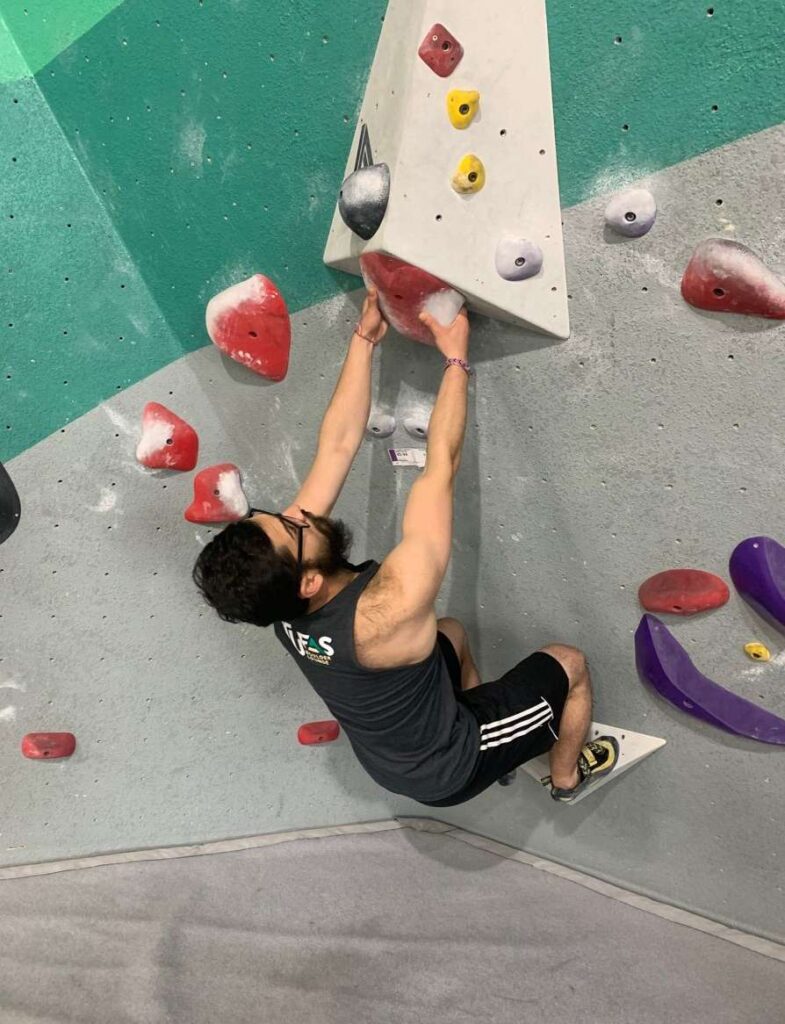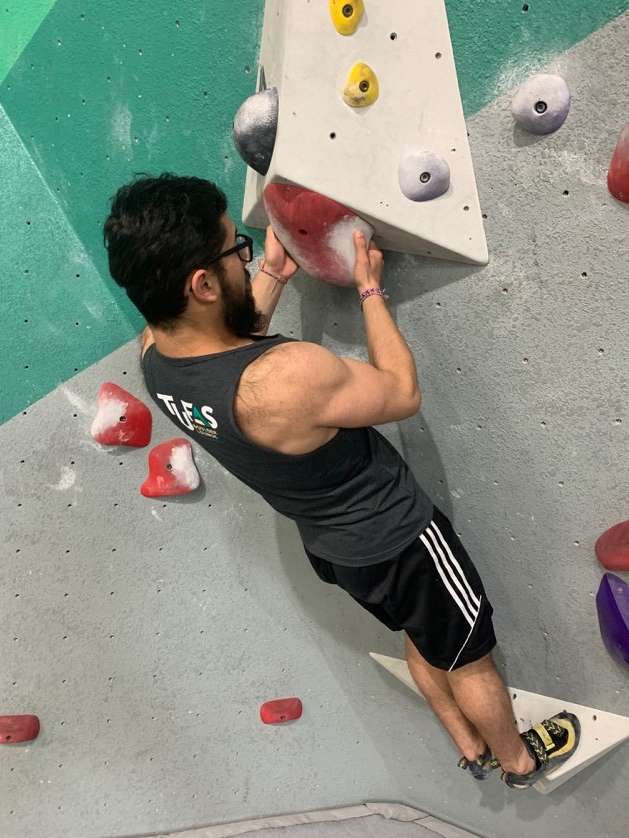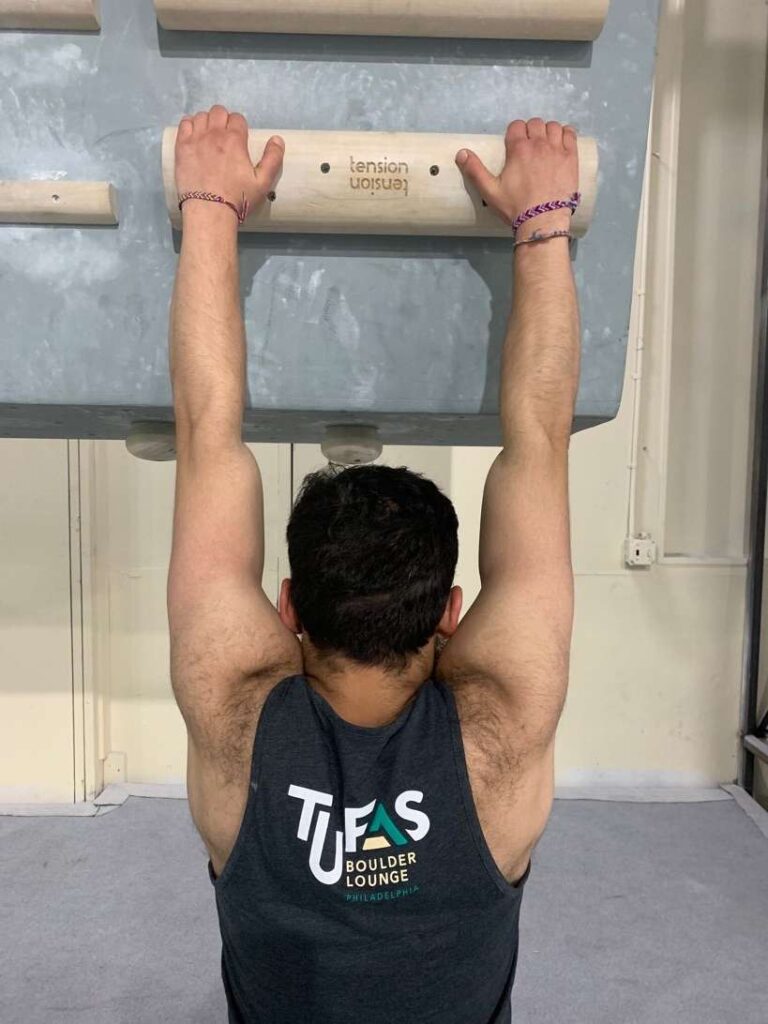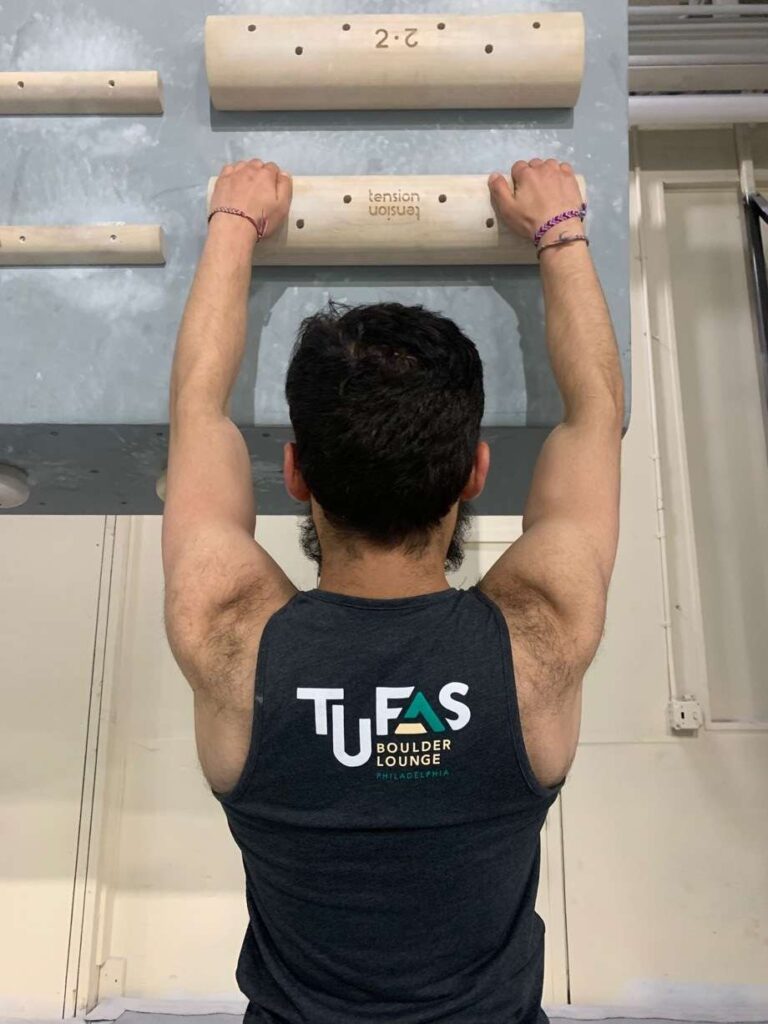Welcome to On Sight! This is our new climbing technique and tips blog managed by the Tufas Boulder Lounge team to get you to more advanced bouldering skills! Every week, we look at ways to get a little better and crush a little harder. Today we’re bringing it back to basics with a few simple adjustments that cannot only fight that dreaded arm pump but also foster a more focused and mindful approach to climbing.
Forearms to Sore Arms
Whether you’re bouldering or climbing with a rope, a pro or a first-timer, you can’t defy the laws of nature. Typically, we focus on the laws of physics—some climbers even say they’ve had a ‘high-gravity day’ if their workout was less than successful—but today we’re shining a spotlight on another branch of science: biology.
Climbing does quite a number on your arms, and shoulders, making everyday actions seem impossible after a tough session. No doubt you need to do some pulling and flexing during a climb, however, exclusively climbing with your arms bent and flexed can exhaust those muscles prematurely.
“Forearms, like any other muscle group, need oxygenated blood to function properly,” says Rory Coughlin, our general manager, “and that rush of blood to your forearms is what climbers refer to as ‘being pumped’ unless they’re talking about their uncontrollable excitement for climbing our boulders.”
The more time your muscles spend under tension the more oxygenated blood they will need to recoup the energy lost. Think back to P. E. class—no, not the sit and reach nor the parachute games, but the flexed-arm hang. The test itself forces you to engage your muscles and bring your body closer instead of simply hanging as you would on the monkey bars. In climbing, you want to do somewhat the opposite.


How is Climbing Different
Hanging with your arms straight takes a significant fraction of weight off your muscles and shifts that load to your skeleton. This means that in addition to decreasing the time your muscles are under tension, climbing with straight arms comes with the added benefit of decreasing the load on your hands and arms.
“Balance and stability are key to good bouldering technique no matter what style of climbing you’re doing,” says Rory. “Having straight arms takes the load off of your hands and forces you to weigh your feet and get low.”
This brings us back to physics: having a lower center of gravity makes the climber more stable. Furthermore, adding weight to the legs and feet increases the friction between the sticky rubber of the climbing shoe and the small foothold giving you a good leg(s) to stand on when it comes to the crux move.
Straightening your arms out can seriously help beat the pump by decreasing the amount of time your muscles are engaged. Use your legs to pick up the slack! Compared to your forearms, the muscles in your legs are not only bigger, but stronger and more resistant to fatigue. Take some strain off your hands by stepping up to holds instead of pulling with your hands—think squats, not pull-ups—and be sure to take advantage of the natural and physical laws instead of fighting them.
Proper Hanging Technique: The Scapu-what?
One of the most commonly made mistakes made both by novices as well as more experienced climbers is mistaking climbing with straight arms for an excuse to stop engaging their muscles entirely. This kind of ‘hanging loose’ takes the complicated and interrelated network of muscles, joints, tendons, and bones in the shoulder girdle out of correct alignment. When done under load over time, this kind of suboptimal positioning can lead to unnatural wear and tear, discomfort, or even injury.
“I see a lot of people try to rest while bouldering by straightening their arms out and hanging but get completely relaxed. They might be doing more harm than good by misloading their shoulder,” says Reiver Ketcham, Tufas co-founder. The anatomical facts are straightforward: engaging your shoulders when you’re hanging is vital.
In order to hang correctly, you need to engage your scapula (SAT word for shoulder blade). If you feel your deltoids (rounded shoulder muscles) by your ears as if you’re trying to hold a phone to your ear, then your scapula is not engaged. Give yourself some room! To do this imagine trying to pinch your shoulders together without shrugging by pulling them back and down. Presto! Proper alignment achieved.

 To Recap:
To Recap:
Climbing is as much art as it is science. Take advantage of this by making simple changes to your climbing style. Changes that will not only boost your performance and strengthen your body overall but those that will also develop better stability and body awareness and help prevent injuries.
When you’re hanging with the scapula engaged, feet weighted, and on a friendly hold, you can take the opportunity to check out the rest of the climb and plan your attack. Keep breathing, though, because those muscles crave oxygen.
- Flexed arms use more energy. Save some by straightening ‘em out!
- Retract that scapula! Pull your shoulders away from your ears and keep them engaged to avoid misuse injuries.
- Pick up the slack by using the much stronger leg muscles to step into holds—squats, not pull-ups.
Keep checking our blog for new climbing articles. In the meantime, receive updates by signing up to our newsletter.